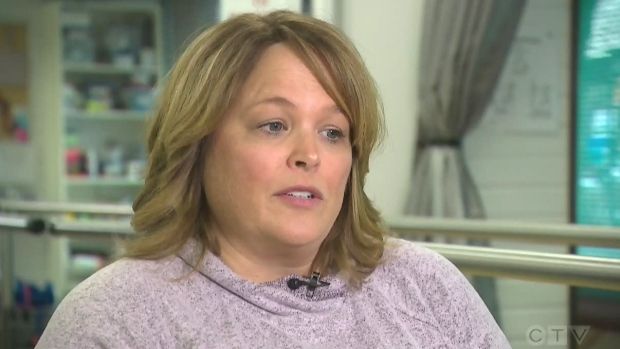An Ontario woman who was part of a U.S. study on experimental spinal stimulators similar to the device implanted in a paralyzed Humboldt Broncos player in Thailand says the device should be tested in Canada where it is not approved for use.




White Sands National Monument in New Mexico is now White Sands National Park.
On Friday, President Donald Trump signed the National Defense Authorization Act for Fiscal Year 2020 that, among many other things, stripped away the monument status and upgraded it to “national park.” The 275 square miles of desert filled with gypsum sand dunes in southern New Mexico became the 62nd national park in the federal system.
The act proclaims the establishment of White Sands Park is intended “to protect, preserve, and restore its scenic, scientific, educational, natural, geological, historical, cultural, archaeological, paleontological, hydrological, fish, wildlife, and recreational values and to enhance visitor experiences…”

Researchers from MIT have revealed the very first images of a human generated through a novel laser ultrasound imaging technique. Unlike conventional ultrasound, the new technique does not require any skin contact with the body, dramatically amplifying the range of uses for doctors in clinical environments.
A conventional ultrasound is one of the cheapest and easiest imaging methods clinicians currently have in their arsenal. Unlike X-ray or CT scans, an ultrasound does not involve harmful radiation, and unlike PET or MRI scans, there is no need for large expensive machines. Of course, ultrasound does have a number of limitations, from the need for significant bodily contact in the process of imaging, to a variability in imaging results.
A new non-contact ultrasound method involving lasers has now been effectively demonstrated by a team of researchers from MIT. The challenge in developing the new method has been figuring out a way to use a laser to produce sound waves. Traditional ultrasound uses sound waves to penetrate a human body and bounce back off different tissues. Light, of course, cannot penetrate a human body as deeply as sound.

Let nobody tell you that the second decade of the 21st century has been a bad time. We are living through the greatest improvement in human living standards in history. Extreme poverty has fallen below 10 percent of the world’s population for the first time. It was 60 percent when I was born. Global inequality has been plunging as Africa and Asia experience faster economic growth than Europe and North America; child mortality has fallen to record low levels; famine virtually went extinct; malaria, polio and heart disease are all in decline.
Little of this made the news, because good news is no news. But I’ve been watching it all closely. Ever since I wrote The Rational Optimist in 2010, I’ve been faced with ‘what about…’ questions: what about the great recession, the euro crisis, Syria, Ukraine, Donald Trump? How can I possibly say that things are getting better, given all that? The answer is: because bad things happen while the world still gets better. Yet get better it does, and it has done so over the course of this decade at a rate that has astonished even starry-eyed me.
Perhaps one of the least fashionable predictions I made nine years ago was that ‘the ecological footprint of human activity is probably shrinking’ and ‘we are getting more sustainable, not less, in the way we use the planet’. That is to say: our population and economy would grow, but we’d learn how to reduce what we take from the planet. And so it has proved. An MIT scientist, Andrew McAfee, recently documented this in a book called More from Less, showing how some nations are beginning to use less stuff: less metal, less water, less land. Not just in proportion to productivity: less stuff overall.

Intermittent fasting means interspersing periods of abstaining from food with periods of eating regularly. You could skip breakfast and eat a late lunch, for example, or fast all day long, once or twice a week.
The research suggests that intermittent fasting is a simple, effective life hack for solving many age-related problems, but the evidence is far from conclusive.
“There really is no one weird trick for the perfect diet for everyone,” John Newman, geriatrician at the University of California, San Francisco told Inverse. Science is leading us toward the idea of maintaining some flexibility in our body’s metabolism, he said.
This week, I had the pleasure of speaking with Dr. Keith Frankish, a European philosopher and writer. I was first introduced to Dr. Frankish’s theory by David Chalmers’ keynote speech at The Science of Consciousness. The theory is Illusionism. Do we have consciousness or does it SEEM as if we have consciousness? Dr. Frankish is an Honorary Reader at the University of Sheffield, a Visiting Research Fellow with The Open University, and an Adjunct Professor with the Brain and Mind Programme at the University of Crete. His focus is primarily in philosophy of mind, but he has interests in many areas of philosophy. Please enjoy this conversation on Illusionism with Dr. Keith Frankish. http://theconsciousnesspodcast.com/

Transhumanism can mean uploading one’s mind into cyberspace. But some transhumanists hope to slowly morph into “immortal cyborgs” with endlessly replaceable parts.
Five years ago, we were told, we were all turning into cyborgs:
Did you recently welcome a child into the world? Congratulations! An upstanding responsible parent such as yourself is surely doing all you can to prepare your little one for all the pitfalls life has in store. However, thanks to technology, children born in 2014 may face a far different set of issues than you ever had to. And we’re not talking about simply learning to master a new generation of digital doohickeys, we’re talking about living in a world in which the very definition of “human” becomes blurred.


The Milky Way could be teeming with interstellar alien civilizations, according to a new study. We just don’t know about it because they haven’t paid us a visit in 10 million years.
The study, published last month in The Astronomical Journal, posits that intelligent extraterrestrial life could be taking its time to explore the galaxy, harnessing star systems’ movement to make star-hopping easier.
The work is a new response to a question known as the Fermi Paradox, which asks why we haven’t detected signs of extraterrestrial intelligence.